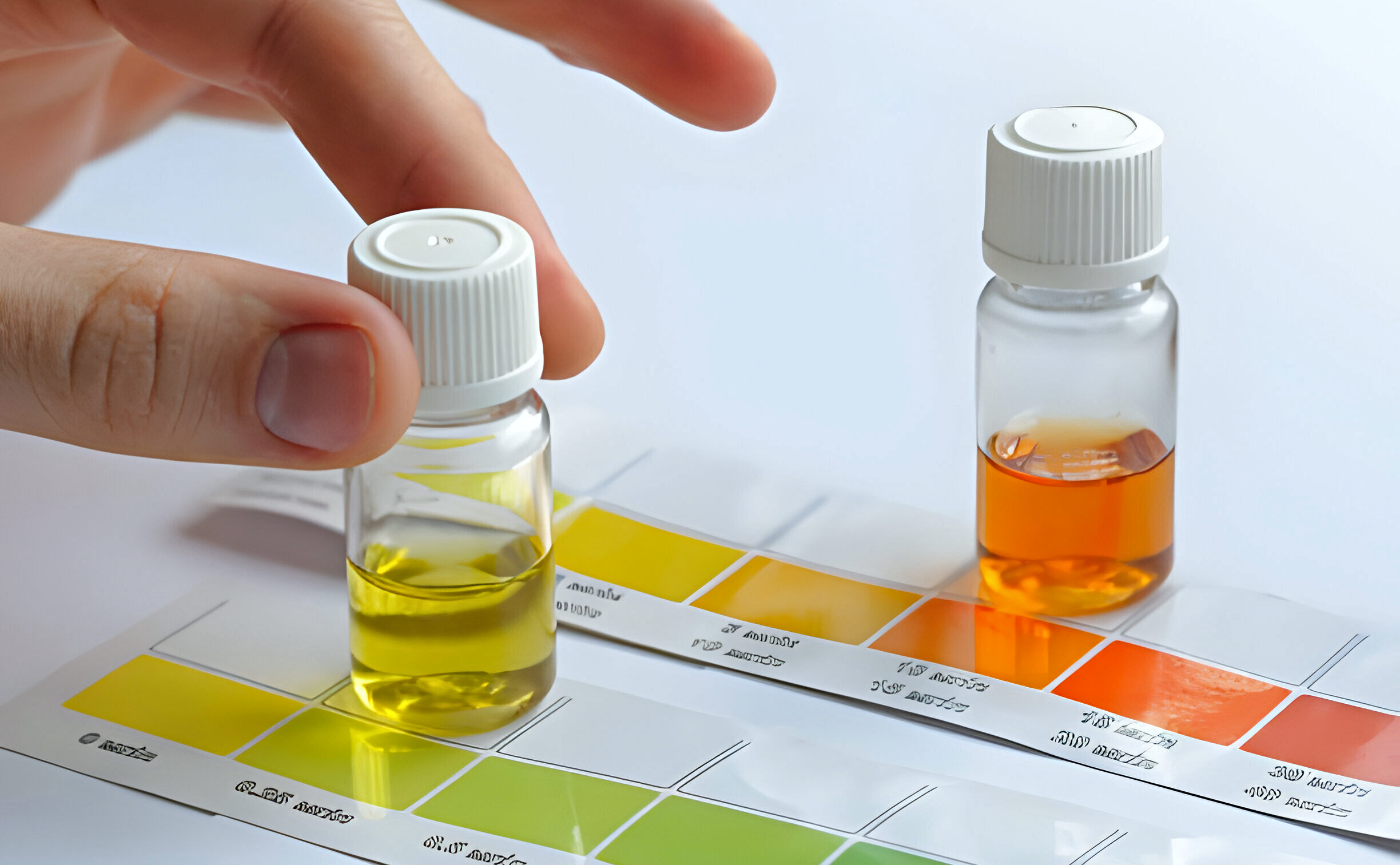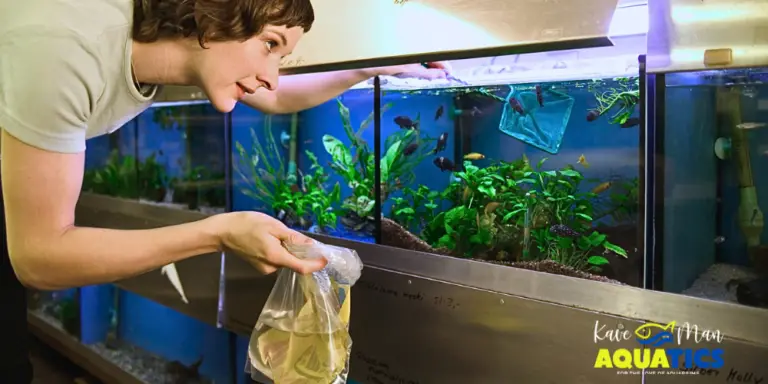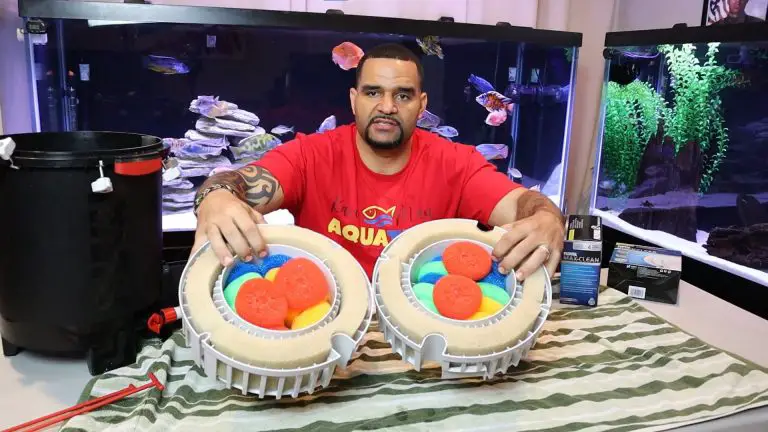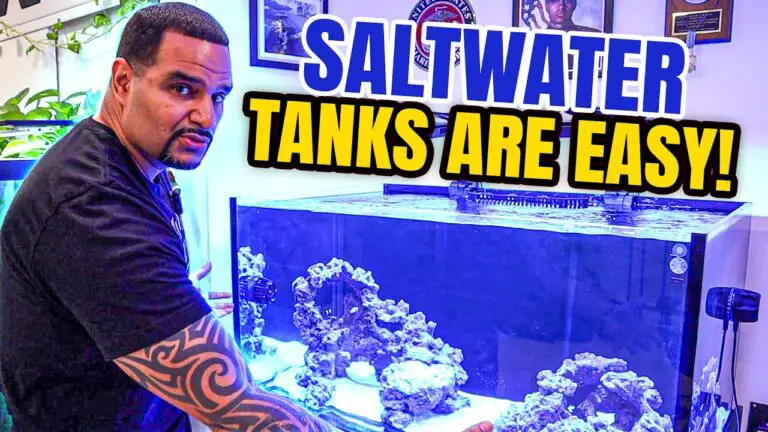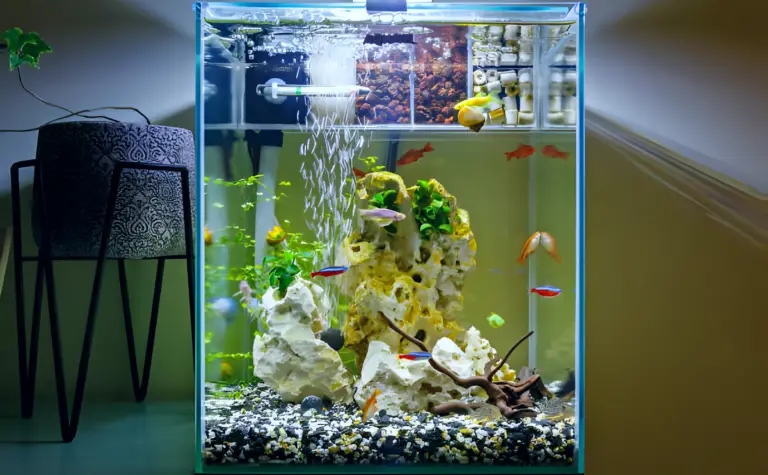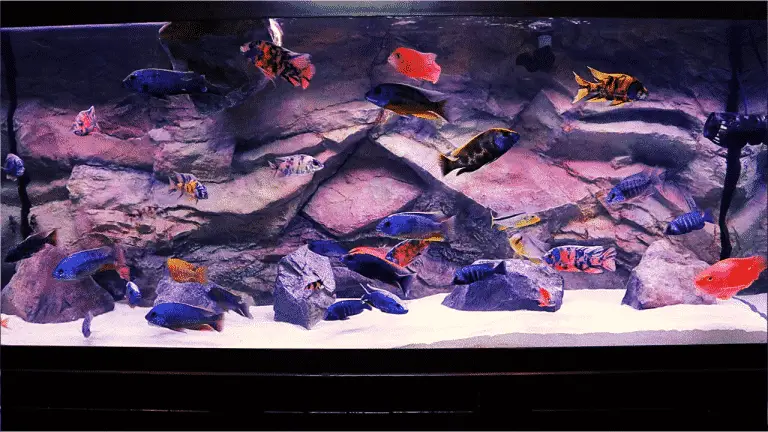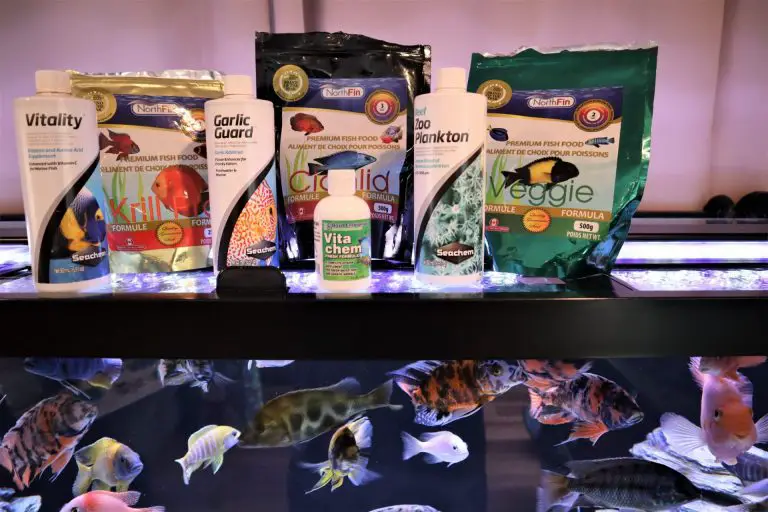6 Causes of Low pH in Aquariums (+ Solutions)
Welcome, fellow fish enthusiasts! Today, we’re diving into a crucial aspect of aquarium maintenance — pH levels. pH measures the acidity or alkalinity of water, and it’s essential for creating a healthy environment for your aquatic friends.
Maintaining optimal pH levels is like providing the perfect home for your fish — it promotes their well-being and ensures a stable aquarium ecosystem.
In this blog, we’ll explore the common causes of low pH in aquariums, shedding light on potential challenges and offering insights to help you keep your underwater world thriving.
Common Symptoms of Low pH in Aquariums
Wondering if your aquarium’s pH levels are off? Keep an eye out for these telltale signs that your tank might be experiencing low pH levels:
- Algae growth: If you notice a sudden surge in algae taking over your tank, it could be a sign of low pH in aquariums. Algae thrive in slightly acidic water, so an overgrowth might indicate pH imbalance.
- Accumulation of dirt: That slimy sludge accumulating on your tank’s bottom isn’t just unsightly — it could also signal low pH in aquariums. Poor water quality due to low pH levels can lead to increased debris buildup.
- High fish stress: Are your finned friends looking more frazzled than usual? High fish stress could be linked to low pH in aquariums. Toxic water conditions due to low pH can cause fish to become stressed, leading to symptoms like decreased appetite and lethargy.
- Abnormal fish behavior: If you notice your fish spending an unusual amount of time near the surface or bottom of the tank, it could be a sign of low pH in aquariums. Fish may exhibit abnormal behavior in response to discomfort caused by low pH levels.
Keep an eye out for these signs, and if you suspect low pH in your aquarium, it’s essential to test your aquarium pH levels regularly and take steps to address any imbalances to ensure the health and well-being of your aquatic pets.
6 Causes of Low pH in Aquariums
Wondering why your aquarium’s pH levels might be lower than expected? Here are six common causes of low pH in aquariums.
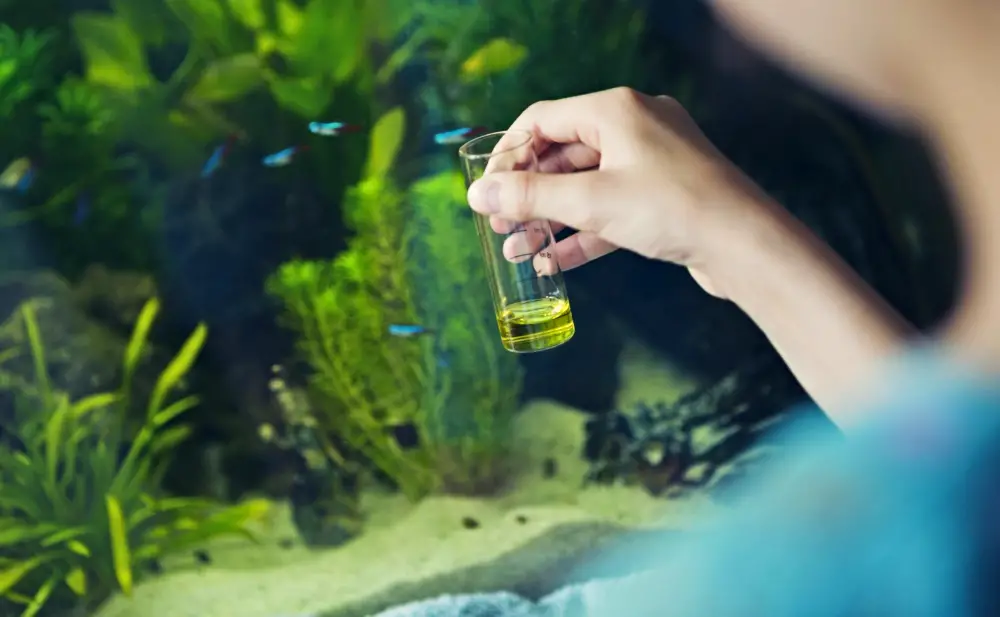
#1 Carbon Dioxide (CO2) Buildup
Let’s dive into the first culprit: carbon dioxide (CO2) buildup. When CO2 dissolves in water, it forms carbonic acid, which decreases the pH of the water. This process is accelerated in aquariums with high CO2 concentrations, leading to a drop in pH levels.
One common source of CO2 buildup is inadequate aeration, which can result from poor water circulation or insufficient surface agitation. Another source is excessive plant growth, as plants consume oxygen and release CO2, especially in low-light conditions.
Solution: To prevent CO2 buildup, ensure proper aeration and water circulation in your aquarium. Consider using an airstone or powerhead to increase surface agitation. Additionally, consider adjusting lighting and plant density to balance CO2 production and oxygen consumption.
#2 Lack of Buffering Capacity
Ever heard of buffering capacity? Let’s unpack why it matters and how it can affect your tank’s pH. Buffering capacity is the ability of water to resist changes in pH when acids or bases are added. In aquariums, buffering capacity helps maintain stable pH levels, preventing drastic fluctuations that can stress fish.
Factors like low alkalinity and inadequate mineral content can reduce the buffering capacity of aquarium water. Over time, natural processes like biological filtration and plant uptake can also deplete buffering capacity.
Solution: Regular monitoring of alkalinity and mineral levels is essential to ensure adequate buffering capacity in your aquarium. If levels are low, consider replenishing buffering capacity with products like crushed coral, limestone, or commercial pH buffers.
#3 Biological Processes
Biological processes in your aquarium, such as nitrification and organic waste breakdown, can release acids or bases into the water, causing pH fluctuations. These processes are a natural part of the nitrogen cycle but can sometimes lead to imbalances if not managed properly.
During nitrification, beneficial bacteria convert ammonia to nitrite and then to nitrate. This process releases hydrogen ions, lowering pH. Additionally, organic waste breakdown releases organic acids, further influencing pH levels in the aquarium.
Solution: To maintain stable pH levels, ensure efficient biological filtration and proper waste management. Regular water changes help dilute accumulated acids and maintain overall water quality. Additionally, avoiding overstocking and overfeeding reduces the load on your aquarium’s biological filtration, minimizing pH fluctuations.
#4 Use of Certain Substrates or Decorations
Let’s talk about how your choice of substrates and decorations can have a sneaky impact on your aquarium’s pH levels! Certain substrates and decorations can release substances that alter the pH of your aquarium water. This happens through a process called leaching, where minerals or other compounds in the substrate or decoration dissolve into the water, affecting the water chemistry.
Some common culprits include driftwood, certain types of rocks like limestone or coral, and even some types of ceramic or resin decorations. These materials can release minerals or acids into the water, causing pH fluctuations over time.
Solution: When choosing substrates and decorations for your aquarium, opt for inert materials like aquarium gravel or sand that won’t alter water chemistry. If you do choose materials that can affect pH, be mindful of their potential impact and monitor pH regularly.
#5 Water Source Characteristics
The pH of your tap water can vary depending on factors like the source of the water, treatment processes, and local geological conditions. These variations can influence the initial pH of the water you add to your aquarium.
Tap water pH typically falls within a range, but it can vary from slightly acidic to alkaline. Some municipalities adjust the pH of tap water to meet regulatory standards, while others may leave it relatively unchanged.
Solution: To adjust the pH of your aquarium water, you can use pH-adjusting chemicals or natural methods like adding limestone or driftwood. It’s essential to test your water regularly and make adjustments gradually to avoid shocking your fish.
#6 Lack of Water Changes or Poor Maintenance
Alright, folks, let’s tackle the importance of keeping up with those water changes and maintaining your aquarium like a pro! Regular water changes are like a breath of fresh air for your aquarium, helping to dilute accumulated acids and maintain stable pH levels. They also remove excess nutrients and waste, promoting overall water quality.
Skipping water changes or neglecting maintenance can throw your aquarium’s pH out of whack. As waste products break down, they can release acids, causing pH to drop. Without regular water changes, these acids can accumulate and lead to fluctuations in pH.
Solution: Aim for weekly water changes of around 10-20% of your aquarium volume to keep things in check. Use a gravel vacuum to siphon out debris and waste from the substrate, and clean your filter regularly to maintain efficient biological filtration.
By staying on top of water changes and maintenance, you’ll not only keep your aquarium looking spick and span but also maintain stable pH levels for a healthy environment your fish will love.
Aquabuildr: Your Ultimate Aquarium Companion!

Remember to stay ahead of the game by regularly testing your aquarium’s pH levels and implementing proper maintenance practices to keep pH stable. Don’t wait until issues arise — take proactive steps to address any underlying factors contributing to low pH and ensure a healthy environment for your aquatic pets.
Ready to take your fish-keeping game to the next level? Explore Aquabuildr, our brand new comprehensive fish-keeping app! With its intelligent algorithm, Aquabuildr makes building and maintaining your aquarium a breeze. Aquabuildr has you covered — from suggesting compatible fish species based on pH levels to creating custom tanks tailored to your needs.
Download the app from the Google Play Store or Apple App Store for FREE!
-
6 Causes of Low pH in Aquariums (+ Solutions)
Discover the six causes of low pH in aquariums and learn how to maintain optimal aquarium pH levels for fish health. Dive in now!

